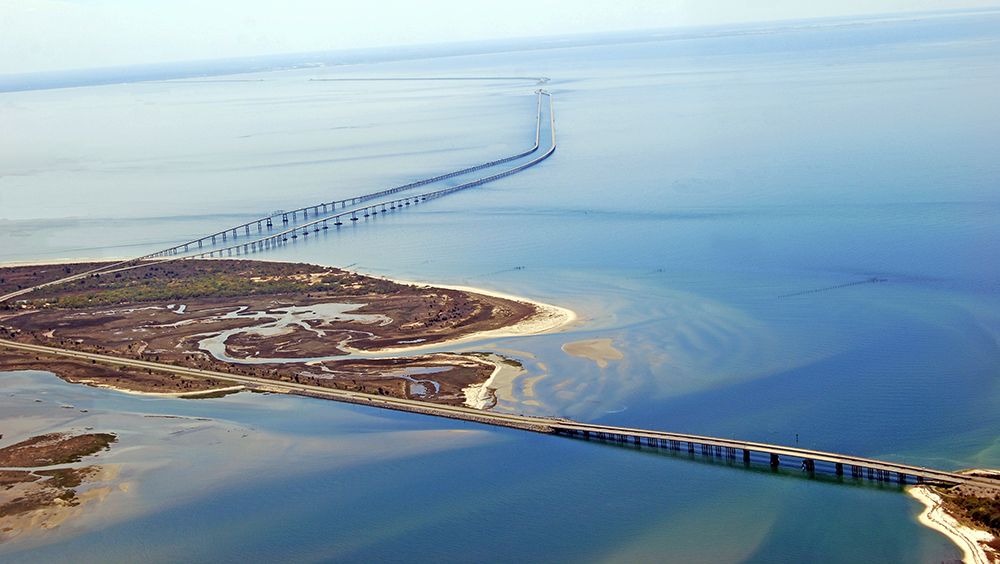The Chesapeake Bay Bridge-Tunnel is a 23-mile long toll facility that spans the mouth of the Chesapeake Bay in Virginia, connecting the Delmarva Peninsula and the Hampton Roads area. Plans to expand the bridge-tunnel are currently underway in an effort to improve levels of service, safety and capacity for all travelers.
The Chesapeake Bay Bridge-Tunnel (CBBT) complex is comprised mainly of low-level trestles, but also includes two bridges, a causeway, approach roads and two underwater tunnels that pass beneath two major shipping channels. The original facility was opened to traffic in 1964, providing one lane of travel in each direction. The Parallel Crossing, opened to traffic in April 1999, transformed the original two-lane facility into four lanes, with the exception of the tunnels that remain single line traffic in each direction.
Plans for the expansion of the Parallel Crossing Project are underway, with the impending construction of a parallel tunnel system, beginning with Thimble Shoal Channel, the more southern of the two channels.
The Parallel Thimble Shoal Tunnel Project will be constructed through a Design-Build procurement process. The project will be funded through an innovative financing combination of toll revenue bonds, a Transportation Infrastructure Finance and Innovation Act (TIFIA) loan, a Virginia Transportation Infrastructure Bank loan, and CBBT general funds. Steer Davies Gleave prepared the Investment Grade Traffic and Revenue Forecast that will be used to help secure the financing.
The CBBT is not a typical toll facility; it does not serve a large daily commuter base, but rather more infrequent trips between the Hampton Roads area and the Eastern Shore of Virginia, as well as long-distance trips between the Northeast US, coastal Virginia and the Outer Banks of North Carolina.
By using the CBBT, long-distance travelers can save 75 miles and avoid the congested metropolitan regions of Baltimore and Washington D.C. For local users, however, it is the sole option for crossing the Chesapeake Bay south of Annapolis, MD, approximately 200 miles to the north.
To conduct our study, we therefore needed to understand and account for these key travel markets and the travel advantages the CBBT provides to each market. To help develop this understanding, we undertook a data collection program that included a travel survey. The survey recruited respondents through multiple methods, including social media and postcard invitations, distributed at the toll plaza, that directed travelers to participate in an online survey. The survey was designed to be mobile-friendly, and we were able to determine that many of the responses were, in fact, received as a result of passengers completing the survey through the web link provided on the postcard.
The Design-Build procurement is now entering the Final RFP phase and Steer Davies Gleave is preparing to support the upcoming activities, including interactions with the bond rating agencies, TIFIA, and other potential investors, to help achieve successful financing for the project.

